Free entry
NUL ZES, Gasfabriek 3A, Eindhoven
2&3 | 9&10 March
Saturday & Sunday | 14.00-19.00
At TAC we want to explore the essence of art, unbound from the artist’s identity. But how? Can we separate the art from the artist? What does a name, your background and experiences have to do with your work? Everything. Nothing. We believe that art speaks for itself, this is why we organised the Anonymous group exhibition. This first edition is a pilot project which will lead to a recurring part of our yearly programme.
With the work:
- ‘Oiwa’ by Marieke Peeters
- ‘Ode to the Bark Beetle’ by Hannah Meijer
- ‘Shimmers / Threads’ by Jeremi Biziuk
- ‘Following chlorine waters from the urinated pool to Brita waterfalls’ by Choi Hyukjoon
- ‘No Place, No Property, No Geometry, No Literacy, No Adultness’ by Kezban Baski
- ´Reconstructed´ by Lena Paßlick
Performances
Saturday 2 March
14.00-19.00 | ‘My inner boss and me’ by Myrthe Krepel
14.00-19.00 | ‘Excuse you, is this my work?’ by Kaan Hiçyılmaz
14.00-19.00 | ‘Anonymous Manifesto’ by Flavie!
16.45 | Welcome by Tom Swart, director of TAC
17.00 | ‘Membraan’ by Berendine Venemans
Sunday 3 March
14.00-19.00 | ‘Excuse you, is this my work?’ by Kaan Hiçyılmaz
17.00 | ‘Membraan’ by Berendine Venemans
Saturday 9 March
14.00-19.00 | ‘My inner boss and me’ by Myrthe Krepel
14.00-19.00 | ‘Excuse you, is this my work?’ by Kaan Hiçyılmaz
14.00-19.00 | ‘Anonymous Manifesto’ by Flavie!
17.00 | ‘Knowledge is A Problem’ by Qiaochu Guo
Sunday 10 March
14.00-19.00 | ‘Excuse you, is this my work?’ by Kaan Hiçyılmaz
17.00 | ‘Knowledge is A Problem’ by Qiaochu Guo
INFO
Almost 100 artists have applied! We would like to thank everyone for their efforts and great applications. Of these artists, we selected 11 who have coherent work that suits the first TAC Anonymous expo.
ARTISTS
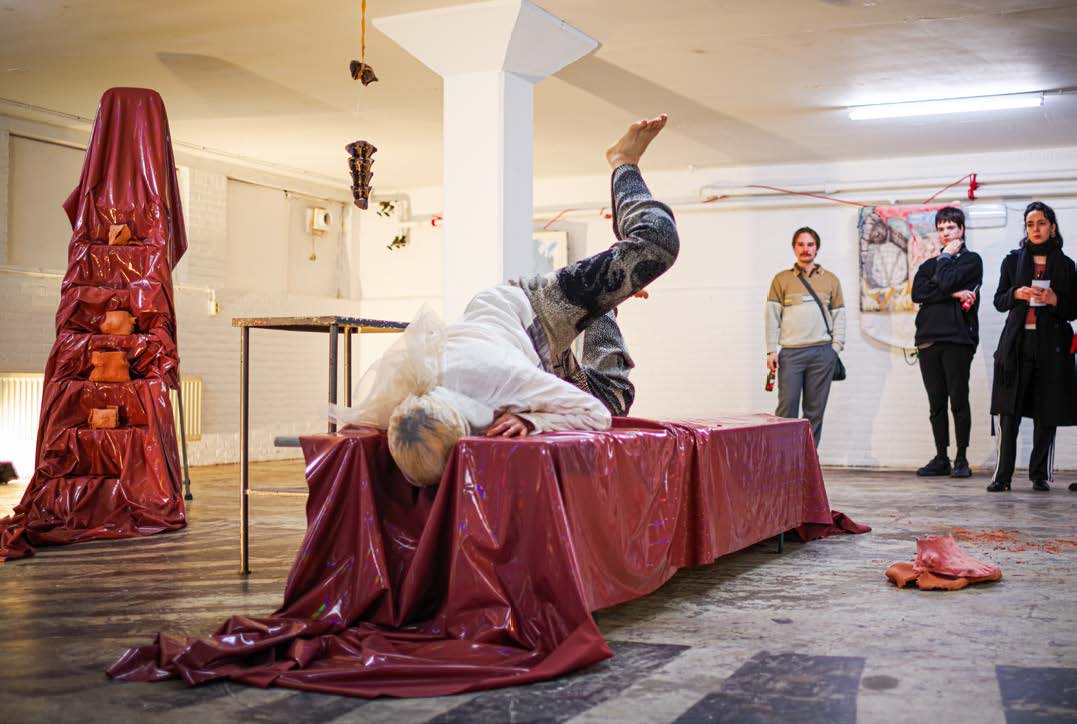
‘Knowledge is A Problem’ by Qiaochu Guo
It derived from the 17 century: a Dutch missionary in Indonesia discovered moxibustion’s miraculous ability to treat “gout” in the feet. This “magical” discovery is from an observation of the cure for an enslaved woman. The treatment was brought back to Europe and spread. Becoming a permeable resistance towards the destructive power of colonization.
-who is observing who?
-who should be watched by whom?
chanting/ navigating/ sleeping- with the non white/ non male body, and smoke of moxibustion.
Photo credit: Sterre Otten, Yufei Gao.
‘Membraan’ by Berendine Venemans
Hello world, this is me. And you?
How do we relate to what or whom lies outside of us? What is real connection? It’s as if there’s an invisible membrane separating us. What do we show, what do we not? And what does the other see, regardless? Do you appear or disappear in the space that floats between us?
In this art performance Berendine zooms in on the humanity and vulnerability of connection. At a time when we seemingly have a lot of control over presenting ourselves and connecting with others and the world around us, she questions how much control we really possess. Do we even have control over what the other person perceives or how she responds to us? A captivating and somewhat alienating performance in which Berendine investigates the dynamics that arise in the present moment between myself and the outside world when making contact through the membrane, the glass sheet. Showing, not showing. Seeing, not seeing.
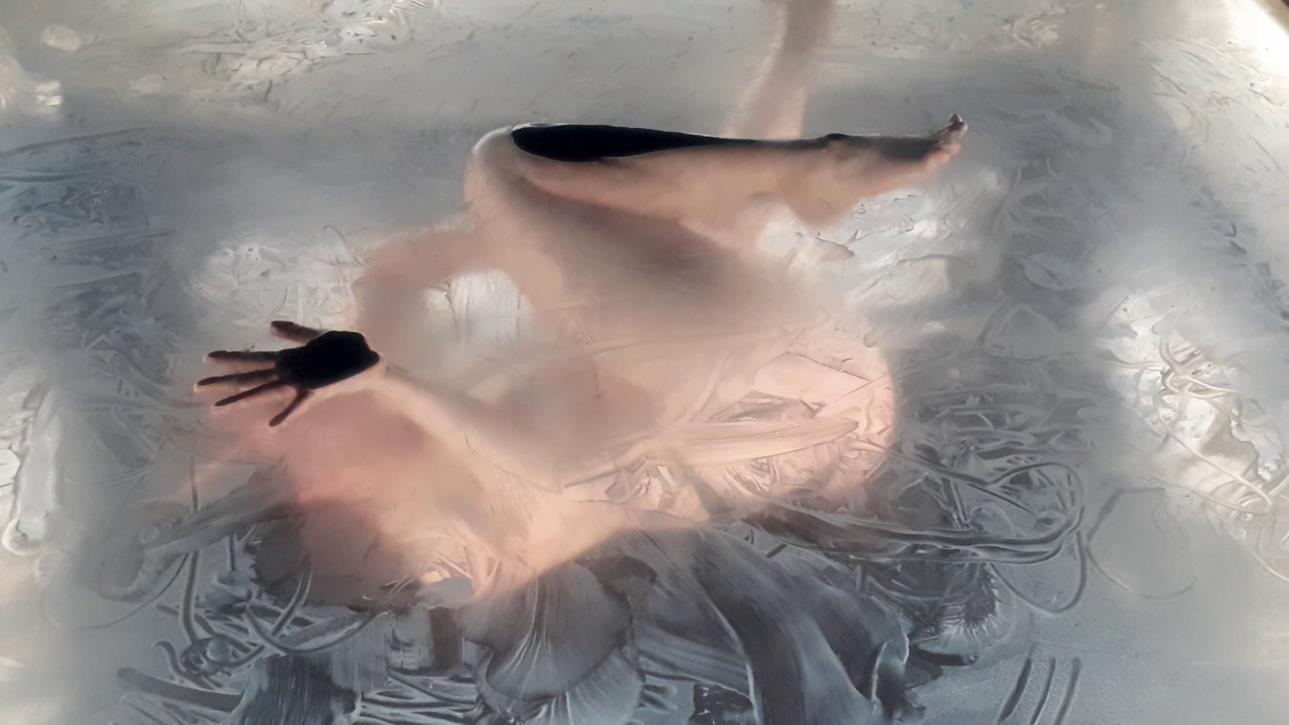
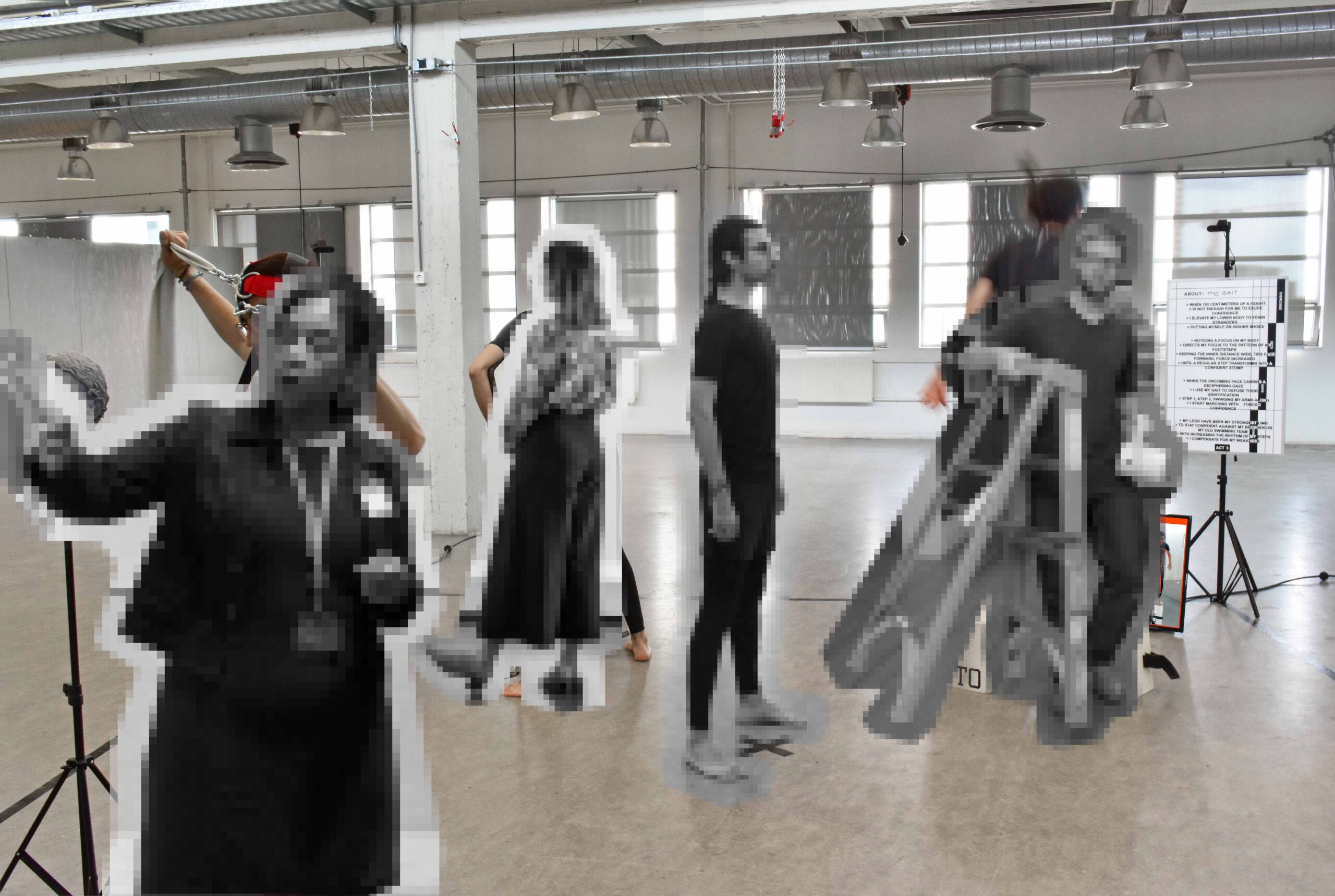
‘Excuse you, is this my work?’ by Kaan Hiçyılmaz
Throughout the exhibition, his effort is to become physically anonymous within the project, alternating between four essential roles apart from his artist self: the visitor, the exhibition technician, the volunteer, and the performer. Each day an activation schedule allocates a different identity and, therefore, different tasks to perform. For instance, as the visitor to view the work and experience it from a stranger’s perspective, or as the exhibition technician to ensure all components run smoothly. Rather than a deletion of his identity, anonymity in an existing work is challenged through the impersonation of identities. While his presence is still alongside the work, same way as in the anecdote, the intention is to generate more uncertainty for you, the visitor, about him, the creator. During the four days, this role-playing will initiate an active questioning of the possibilities of autonomy or the inseparability of the bond between the art and the artist.
‘My inner boss and me’ by Myrthe Krepel
How can you resist the demands of your ‘inner boss’? How do you restore work-life balance? And to what extent is this actually possible for an artist, where work and non-work are almost indistinguishable? Myrthe created a persona for her inner boss: Nea Liba. In this exhibition, Myrthe showcases the exchange—the conversations—between herself and ‘her boss’. Furthermore, working in a salaried position, she misses having a team of people around her. Regular colleagues with whom she can enjoyably complain about work and the boss. She explores this dynamic in her performance, where she gossips about her ‘inner boss’ with other exhibitors and visitors. She also occasionally embodies her character to engage in conversations with her inner boss.
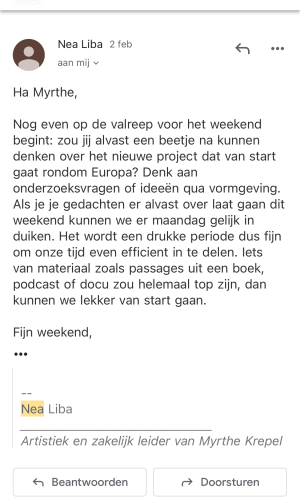
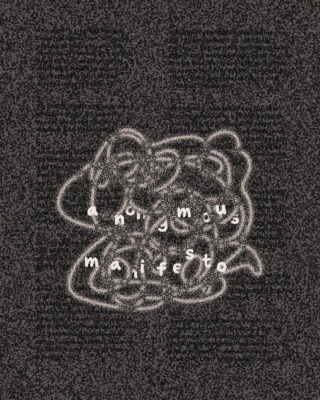
‘Anonymous Manifesto’ by Flavie!
A new manifesto on anonymity is set to be unveiled.
This manifesto advocates for anonymity as a strategic and experimental approach, highlighting artworks as autonomous entities with complex material dynamics, detached from their creators. It explores the potential of decentralized art practice, diverging from the traditional artist-centric paradigms.
Over the course of two weekends, the manifesto will gradually take shape through intermittent writings, unfolding as happenings, until its completion.
‘Oiwa’ by Marieke Peeters
Oiwa, the emblematic long-haired ghost that remains at the root of many Japanese horror media. This work is the result of Marieke’s research into Japanese Kaiki eiga (weird films) and the Rensageki (chain drama) performances from the 1910s. Rensageki are a Japanese hybrid of film and theater in which actors would perform interior sets scenes live and then screen the outside scenes on film. This method of performance emphasizes the mutual connection between theater and cinema and shows how they contain one another. After discovering this hybrid, Marieke began to experiment with another new form of presentation that would blend the cinematic and theatrical.

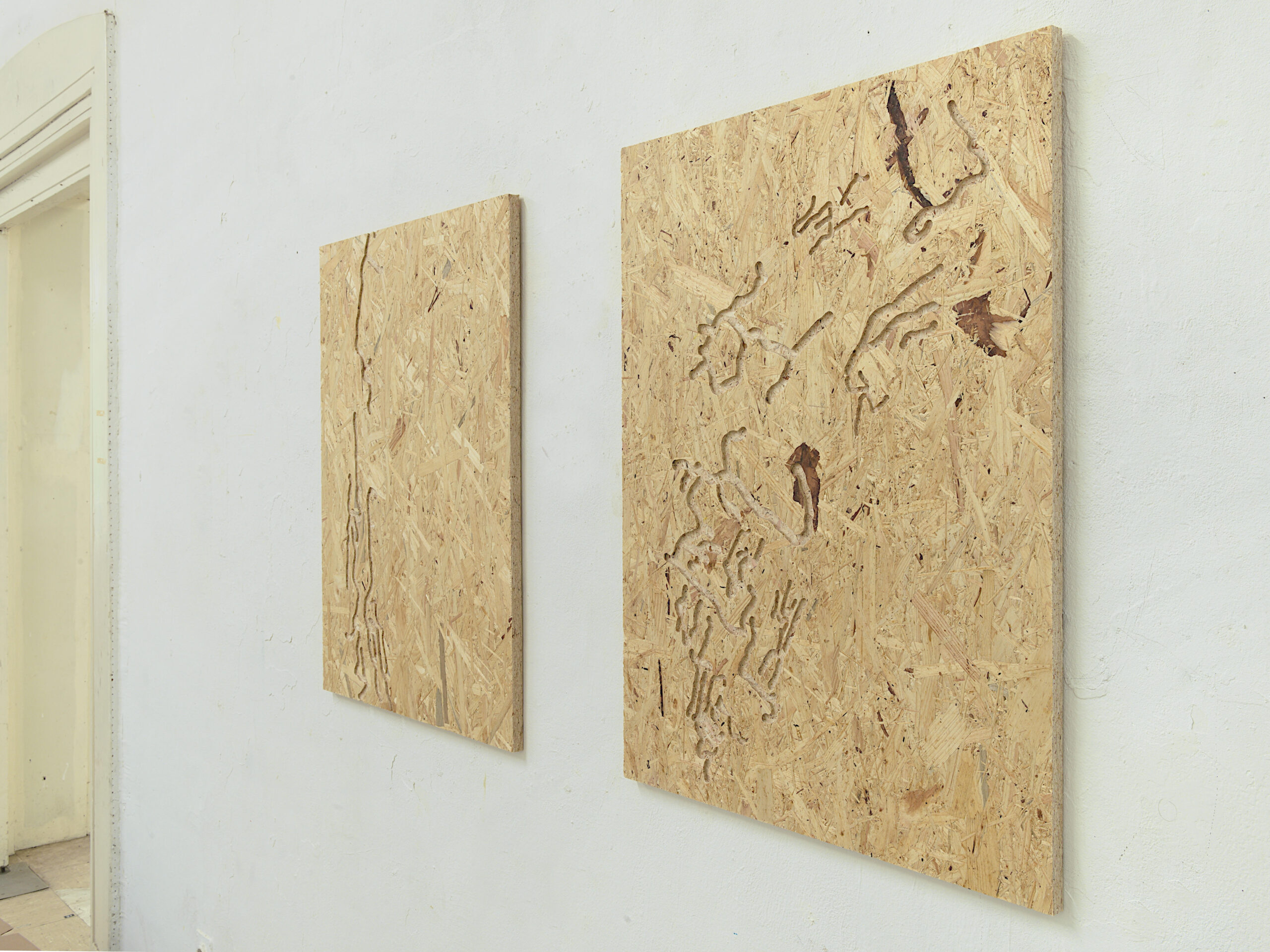
‘Ode to the Bark Beetle’ by Hannah Meijer
The artworks are inspired by the bark beetle. These beetles dig tunnels between the wood and bark of trees. Usually, these corridors become visible to humans only when a tree dies and the bark starts to let go. Hannah began collecting these corridors and ‘traced’ them. “I associate them with the hollows you make when using a router. With milling, you almost always create a line of constant depth and width in wood. Now, I have started reproducing them in wood using a router, but not in tree trunks as the beetle would do, but in materials made by humans: OSB. In this way, I create human-made beetle corridors.”
‘Shimmers / Threads’ by Jeremi Biziuk
‘Shimmers / Thread’ is an attemt to bridge Jeremi’s interest and intrigue into sonic arts and its inextricable visual qualities. The modulation and translation of found footage, field recordings and audio pieces from nature finds similarity with the maker’s attempt at (re)construction of eurasian folk and native imagery via techniques and the lense of a contemporary creative.
A work which makes one question and see the resemblance and different overlaps and look for further points of interest.
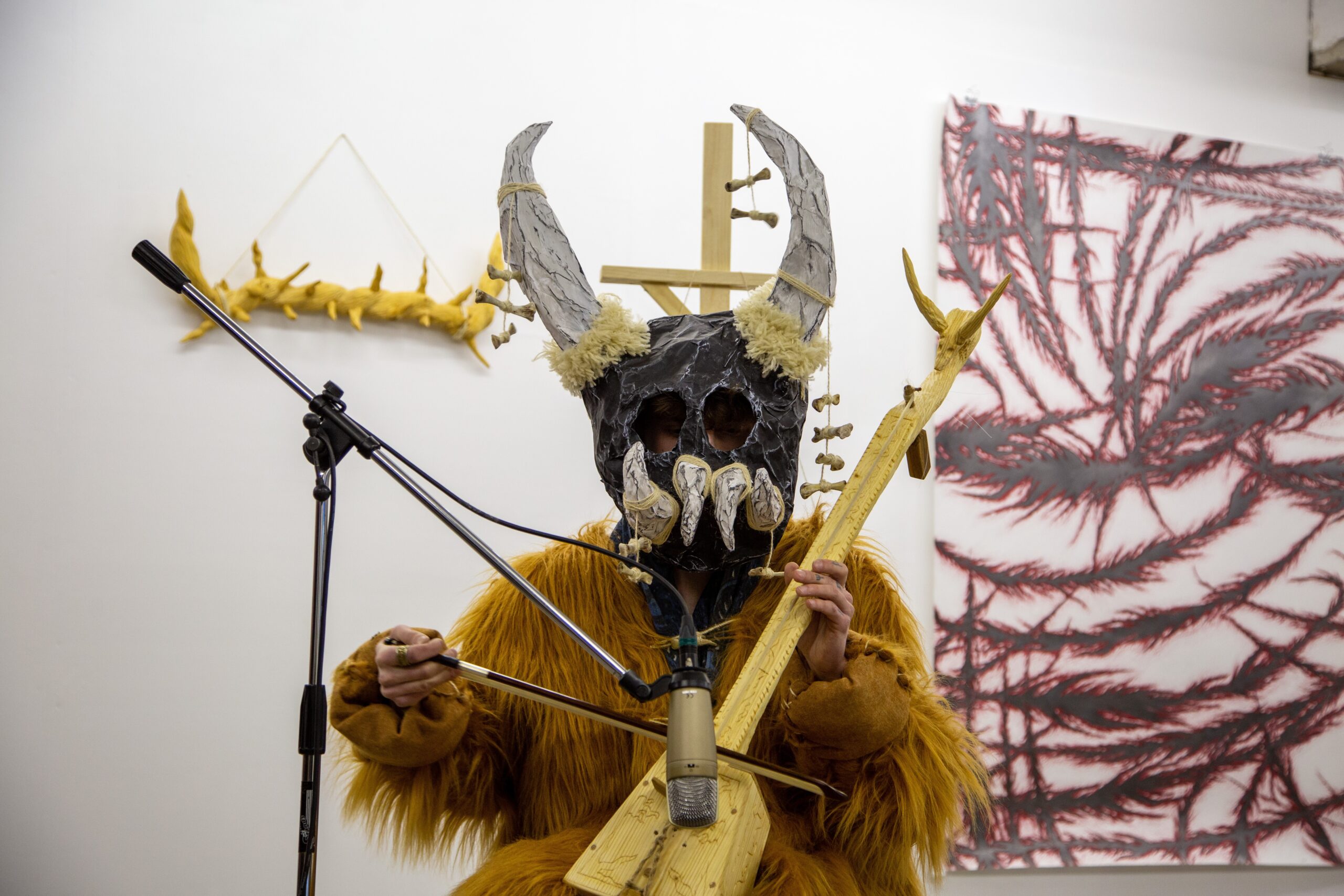
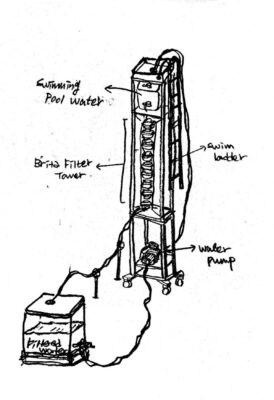
‘Following chlorine waters from the urinated pool to Brita waterfalls’ by Choi Hyukjoon
In a swimming pool guarded by chlorine, we find purity, a shield against contaminants. Yet, the Brita filter, our household bastion of clean drinking, counts this chlorine as an adversary. How could we attain ultimate purity? I do not know the answer, but there is the paradox that intrigues: two champions of cleanliness, each questioning the other’s definition of pure.
‘No Place, No Property, No Geometry, No Literacy, No Adultness’ by Kezban Baski
Language – in its broadest sense; linguistic and visual – permeates the painting, video, installation and sculptures of Kezban Baskı. Apart from the structure of language, language-related issues such as property, place, divided geometric world surface, adulthood, the perception of gender through property, patriarchy and literacy are among the subjects the artist works on. Her interest in the literacy which is subject to permission and control for women and dispossession (no property) is explored through her series about patriarchy.
In her “No Place, No Property, No Geometry, No Literacy, No Adultness” project, the artist formulates the distinction between image and meaning by combining her pastel works on which she uses a single image on the painting surface to create a visual alphabet rather than storytelling, and the linguistic alphabet she created to emphasize the plastic indicator of language. Just as language with a diachronic structure needs a carrier surface to gain objective reality in the form of writing; in her pastel paintings, the empty paper ground for the images drawn from the diachronic structure of life is a carrier surface where the images gain reality only, rather than a place.
During the creation period, the artist’s own reality and the reality of the geography in which she grew up converge with each other and these images gained a visual reality. By following the images created, a process of interpretation based on gender roles began for the artist. The works produced have become a stance against and a form of action.
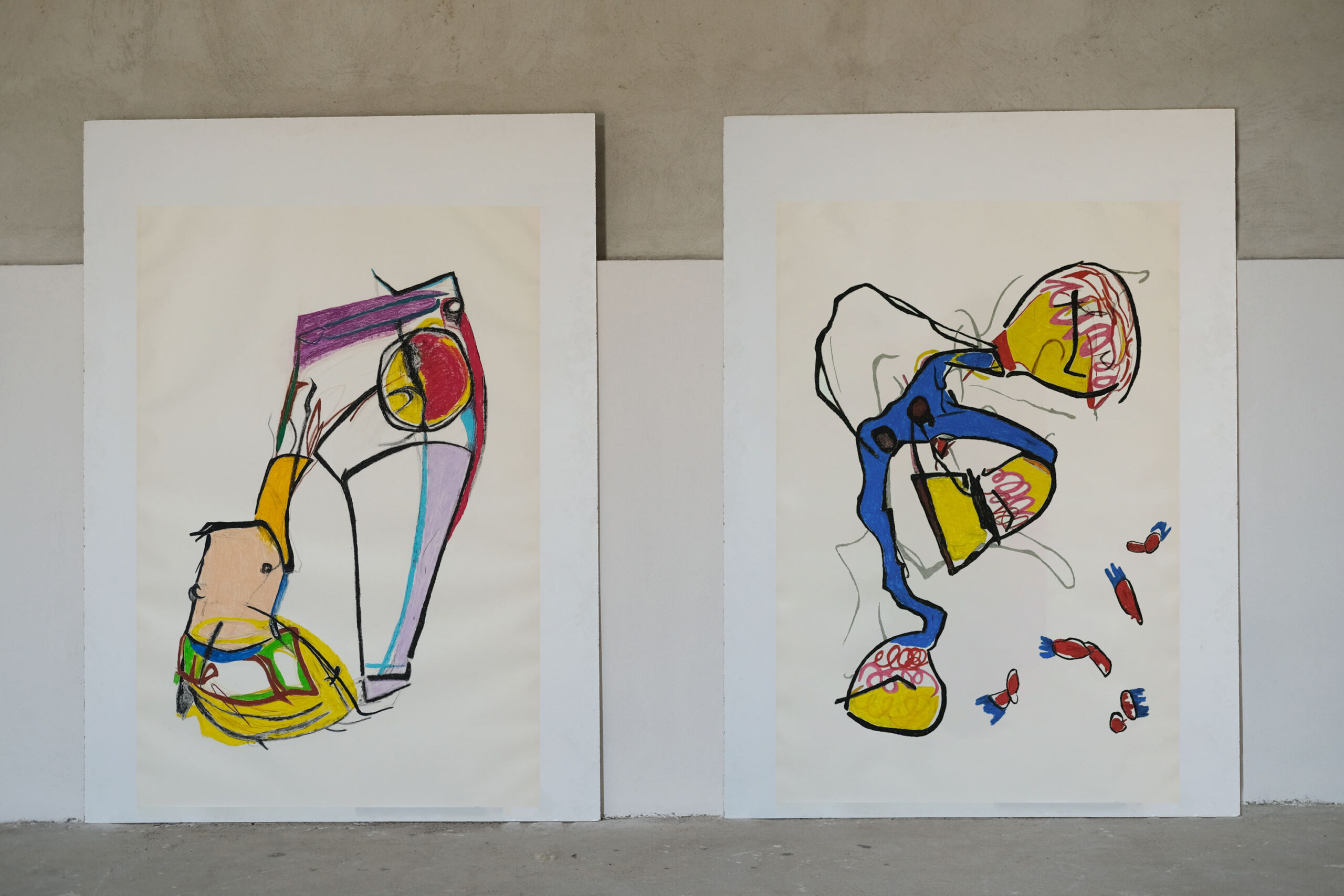
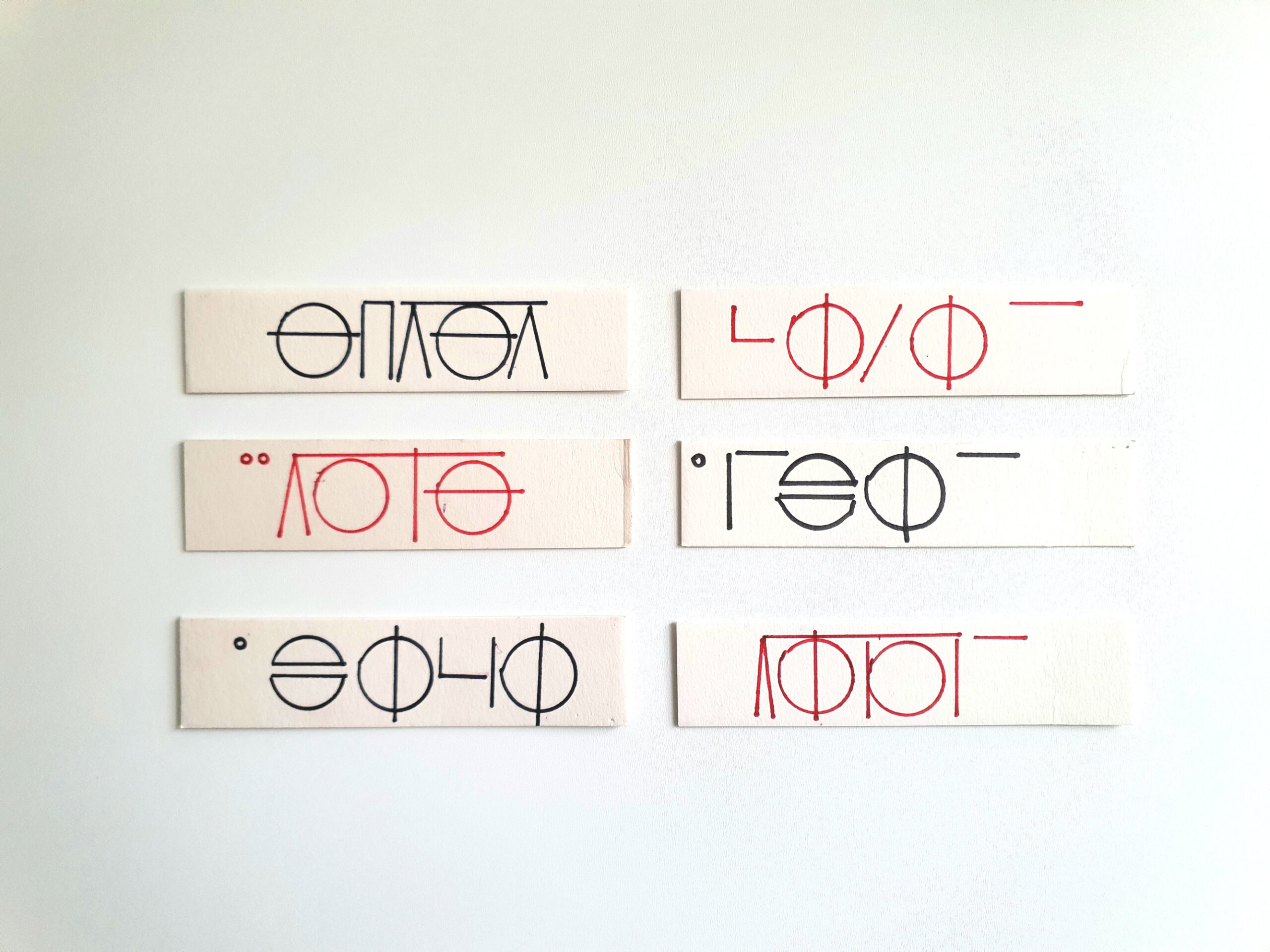
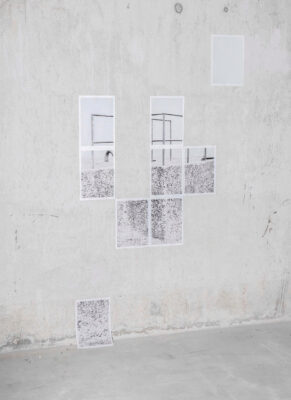
´Reconstructed´ by Lena Paßlick
An exploration of the act of framing through various media, such as darkroom printing, screen printing, projecting, or collaging.
In this work Lena questions the significance of what lies outside the frame compared to what is contained within.
A quote from Judith Butler’s “Frames of War” introduces a new basis for Lena´s visual research:
“Although framing cannot always contain what it seeks to make visible or readable, it remains structured by the aim of instrumentalizing certain versions of reality.”